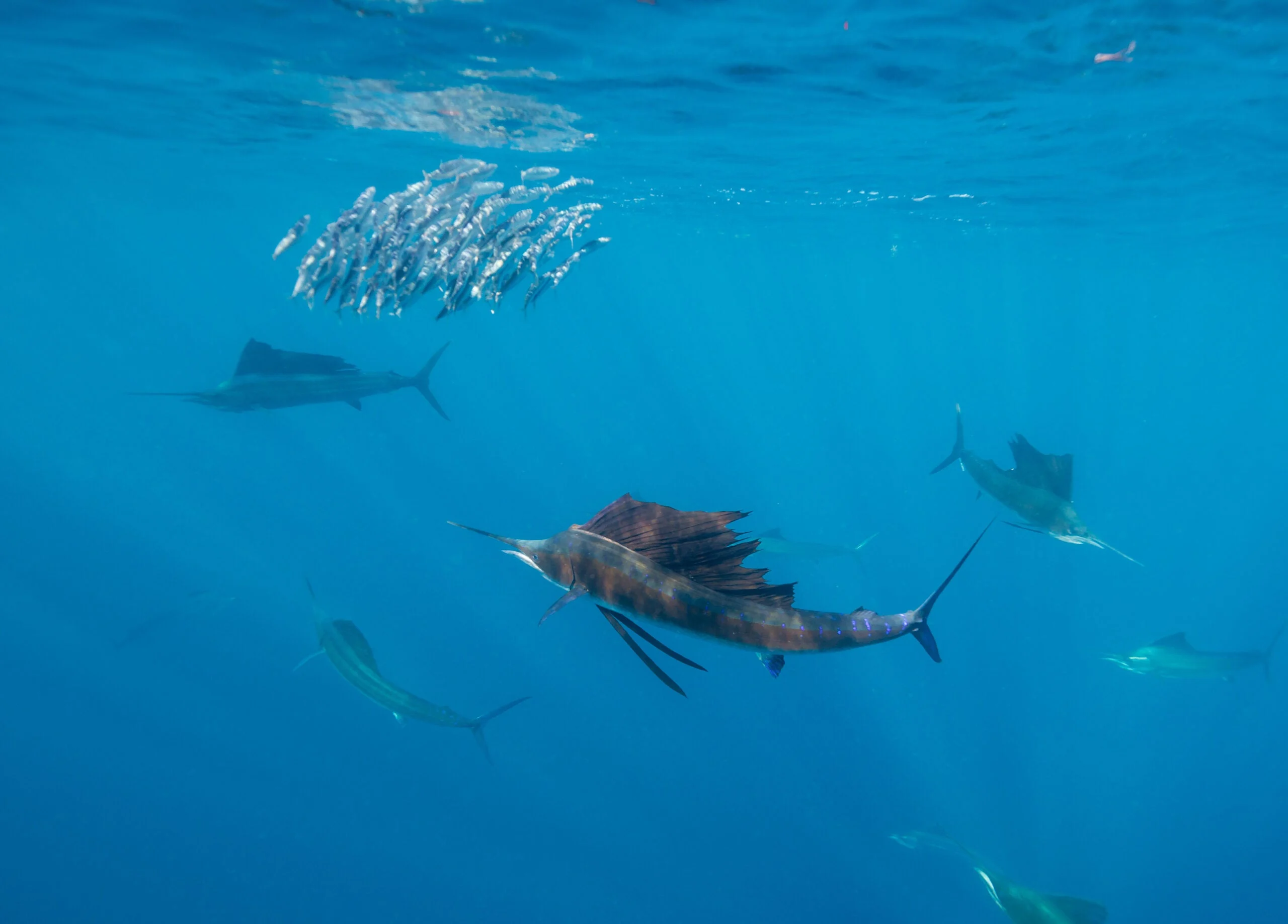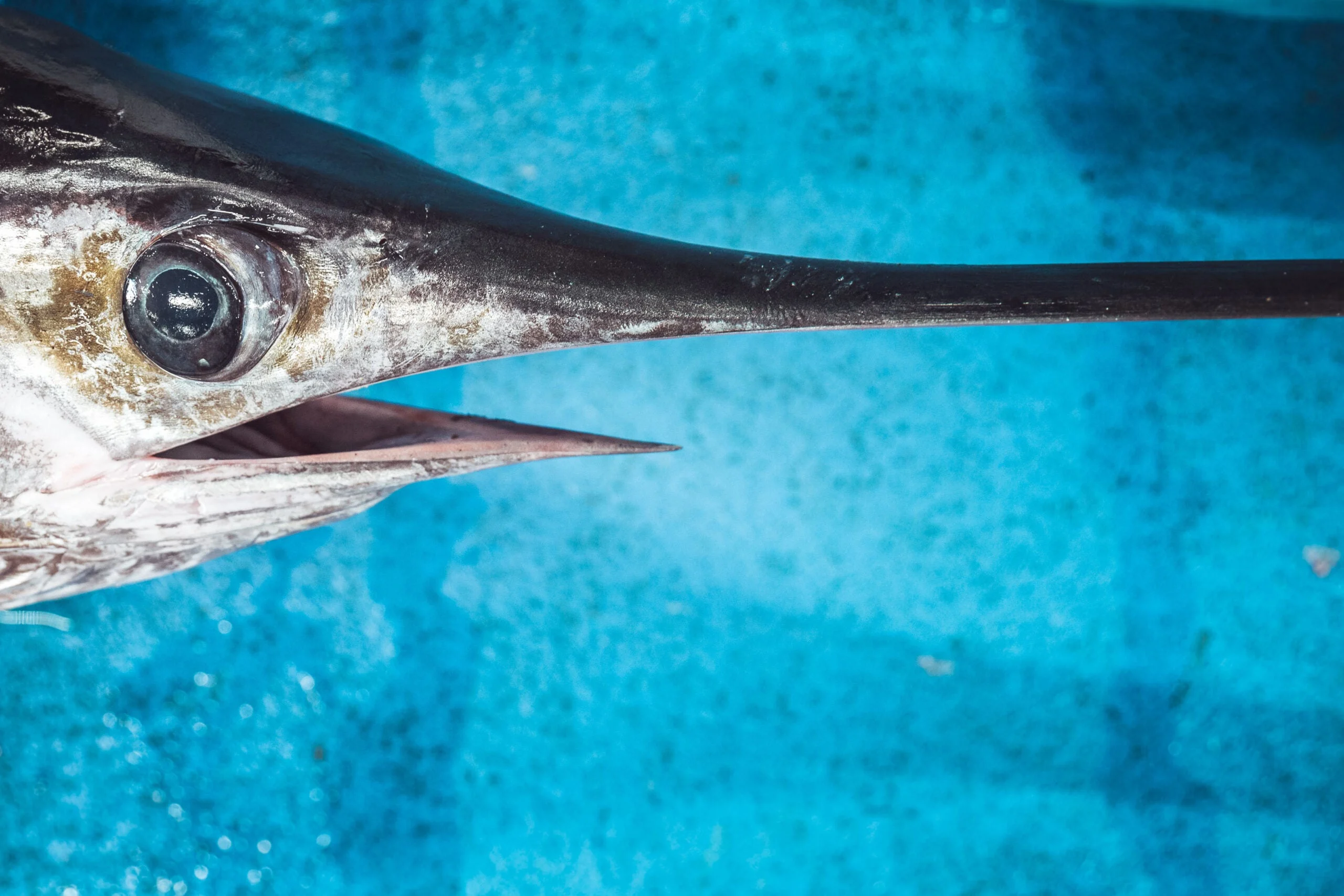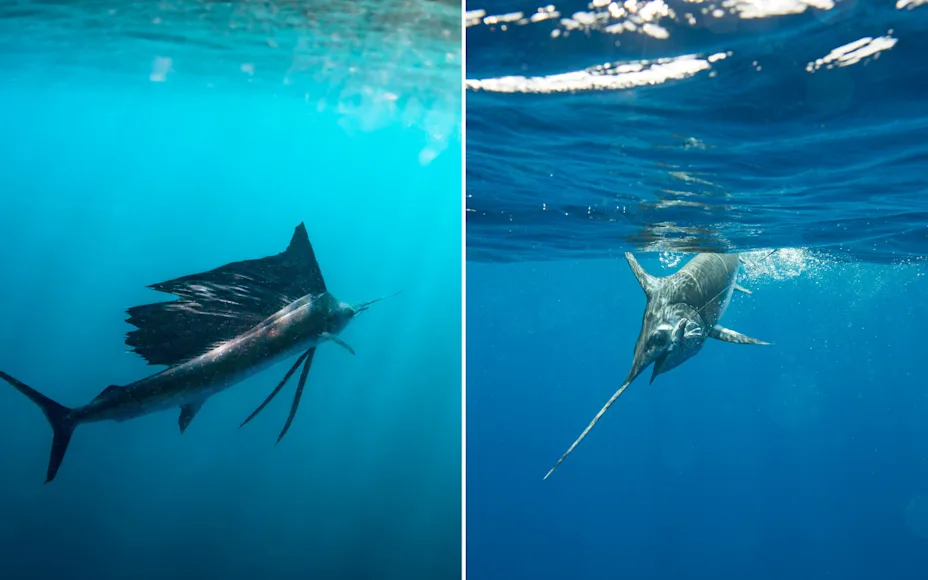Billfish have captivated fishermen for centuries. They’re strong, powerful, and are often viewed as the apex of angling achievements. A giant blue marlin was the focus of Ernest Hemingway’s famed _The Old Man and the Sea
_, and whether you grew up near the Atlantic or Pacific Coasts, or have spent your entire life in Middle America, there’s a strong chance a marlin, sailfish, or swordfish is on your bucket list thanks to that book.
Not all billfish, however, are created equal. Of the big three that thrive in U.S. waters, swordfish and sailfish are arguably the easiest to find and catch. So, let’s look at the differences between sailfish vs swordfish to help you decide which one you’d rather target if you plan to make your billfish dream a reality.
Sailfish vs Swordfish vs Marlin: Understanding the Billfish Family
Whether it’s sailfish vs swordfish vs marlin—they are all classified as billfish. The Atlantic longbill spearfish
—a rare relative of sailfish and marlin—is part of the line up as well. The long, spindle-like bills of these fish, however, is the only thing that links all them together. Many people don’t realize that, scientifically speaking, swordfish are not related to marlin or sailfish. The latter are part of the Istiophoridae family, while the swordfish is the sole member of the family Xiphiidae. While they may look similar at a glance, they are very different fish in build, strength, habitat, and behavior.
The Basics of Sailfish

A trio of baitfish work together to corral a school a baitfish near the surfaces. Adobe Photostock
Atlantic and Pacific sailfish look extremely similar, though they are genetically different and classified as separate species. One of the most notable attributes between them is that Pacific sailfish grow larger on average than Atlantic sailfish.
Sailfish Appearance
Pacific sails frequently break the 200-pound mark, while Atlantic sails weighing more than 100 pounds are fairly rare. Both species, however, use their massive dorsal fins—or sails—to herd baitfish. As they encircle a school of prey, they’ll raise and lower their sails, increasing their size and creating sort of a wall to block their food’s escape and keep it contained in one area. They can then slice through the school at high speed and grab a mouthful of baitfish. They will also use their bills to swat at prey and stun it, then quickly spin around to gobble it up.
Distribution and Habitat
Sailfish are one of the most abundant billfish in the U.S., and though they can be caught as far north as Cape Cod, Florida is hailed as the sailfish capital of the States. While Pacific sailfish are caught off the coast of Southern California, their numbers increase as you move south into Mexico and Central America. What makes them both such popular targets is that you don’t need to go very far offshore to catch them, and they’ll hit a wide variety of baits and lures.
Fishing for Sailfish
Unlike marlin that require long runs, heavy fuel burns, and expensive tackle to catch in most locations, Atlantic and Pacific sailfish are usually hooked within sight of land. Though they’re certainly pelagic ocean roamers, they’ll come into relatively shallow water to feed, particularly in the winter off the Florida Coast. Given that the average Atlantic sail will weight 50 to 80 pounds, they can be fought on lighter spinning rods instead of the cumbersome tackle often employed by marlin anglers. This means whether you’re a complete novice or seasoned pro, you can handle a sailfish. They can be taken on the troll, by casting live baits to sails spotted cruising in the swells, and even with topwater lures. But no matter what they eat, you’re in for a ride because sailfish are one of the fastest fish in the ocean and their aerial acrobatics are second to none.
The Basics of Swordfish

Swordfish can regulate the temperatures of their large eyeballs to help them see in the dark, deep waters where they’re often caught. Adobe Photostock
In terms of habitat, the difference between sailfish vs swordfish couldn’t differ more. Though there are rare scenarios that bring swordfish into somewhat shallow water or at least up near the surface, they are deep-dwelling fish. It’s not uncommon to target them in thousands of feet of water far offshore. Where they thrive there is little to no sunlight, which explains much of their anatomy.
Swordfish Eyes
Swordfish have massive eyeballs, the temperature of which they can regulate, to help them see as much as possible in the cold, inky blackness. Whereas marlin and sailfish have short, round, needle-like bills, a swordfish’s bill is long, flat and tapers exactly like a sword—hence their name.
Swordfish Bills
Although a swordfish will use its bill defensively and to stun prey, they also use it to sift through the sand and mud on the bottom rooting for prey, which is why their bills are extremely rough on the edges. Old swordfish have even been caught with bills worn down to nubs.
Fishing for Swordfish
Swordfish exist in every temperate ocean in the world, and over the last 20 years or so, fishing for them during the day has become very popular throughout the Northeast, Florida, and the Gulf. Anglers use electric reels to drop whole squids and mackerel down thousands of feet with up to 5 pounds of lead. Even with the use of electric reels, however, fights can last for many hours. Prior to modern technology making day-time swordfish easier, they were mostly targeted at night, as they’d come up much higher in the water column to feed on squid and baitfish under the cover of darkness. Because of this natural habit, they are frequently caught by party boat anglers on overnight tuna trips in the Northeast and Mid-Atlantic.
Without an electric reel, though, be ready to suffer. Swordfish can break the 1,000-pound mark, and they are one of the strongest-fighting fish on the planet. They’re made of pure muscle, and while the payout of delicious swordfish steaks is worth the grind, your whole body will be sore at the dinner table.
Continue Reading…
Now that you have an understanding on the difference between sailfish vs swordfish, check out these stories with tips and gear recommendations for chasing billfish:


